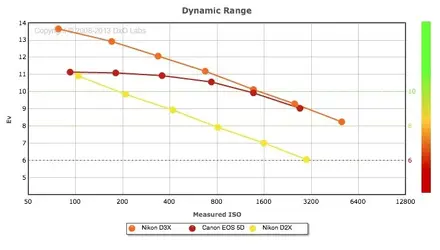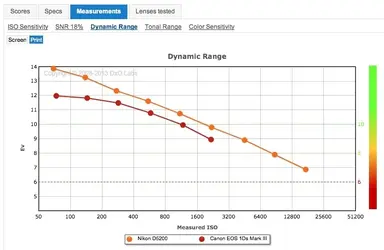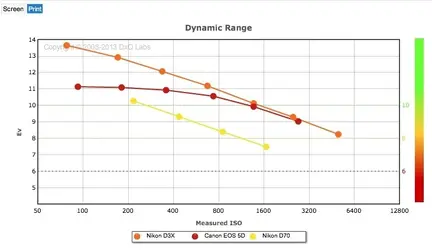Gavjenks
TPF Noob!
- Joined
- May 9, 2013
- Messages
- 2,976
- Reaction score
- 588
- Location
- Iowa City, IA
- Can others edit my Photos
- Photos OK to edit
? Film has noise, film has diffraction limits, film has MTF charts, film has dynamic range (may vary by developer too but still measurable), etc.If people shot film, they wouldn't have to worry about any of them.
Not sure what you mean here.
If you don't WANT to worry about them though, this is a fantastic website here where you can pull up any cameras and compare their actual images side to side in RAW or JPEG:
Studio shot comparison: Digital Photography Review
As for DxO Mark, Their actual data seem pretty good. Their "overall" and "overall sub" scores or whatever you call them (everything on that page with the picture of the camera and the bar graphs) is pretty much crap, though. I know exactly how they calculate each (they advertise how), and every one of them is dumb. Just as one example, the dynamic range score takes into account ONLY dynamic range at their base rate ISOs, and then completely throws out the other 90% of the data they themselves collected, ignoring it for the score. Why? No particular reason given. This is bafflingly idiotic. Why would they make their score only relevant to people who never shoot anything but ISO 100? The other scores have even weirder issues.
And frankly, due to how incompetently I know they handle their score calculations (something that should be an incredibly simple matter of, for instance, averaging raw measurements over ISOs...), I don't have a lot of faith in their research methods on the other stuff under the hood. Why would they be super careful and reasonable about that, but not the final calculations? Seems unlikely. Their underlying measurements do, admittedly, seem to do a better job than their overall scores at reflecting my actual experience using cameras and looking at real shots, though, so I have not lost all faith in them. Just avoid the scores screens.
Still, the link I just posted above, with the studio shot comparisons that you can just look at yourself, has been gradually earning more of my attention recently.






![[No title]](/data/xfmg/thumbnail/32/32164-d68fa2de02f9bef524bbd68aac2f12e4.jpg?1734161046)




![[No title]](/data/xfmg/thumbnail/32/32167-524b76a903731ff48d48682c9f9b0978.jpg?1734161046)




